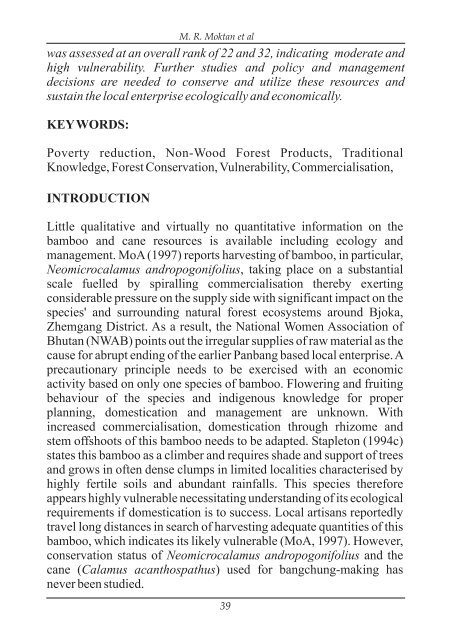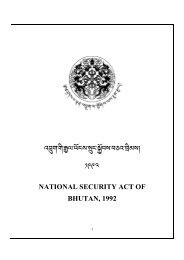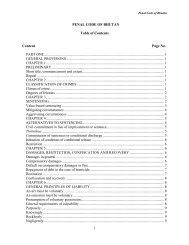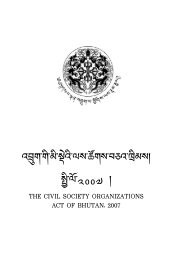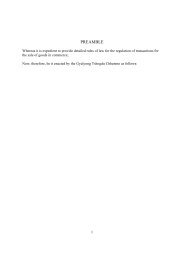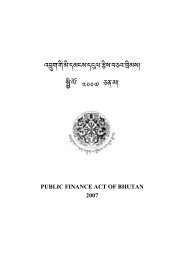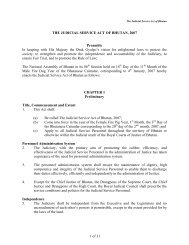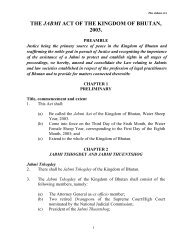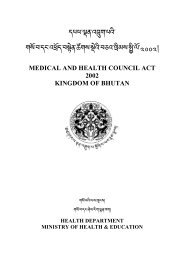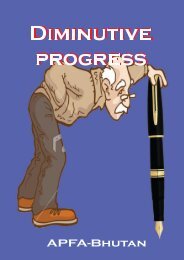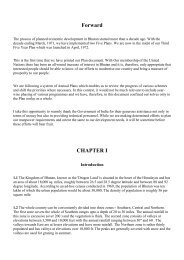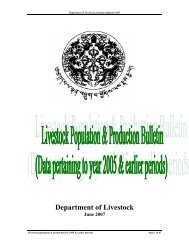journal of renewable natural resources bhutan - Ministry of Agriculture
journal of renewable natural resources bhutan - Ministry of Agriculture
journal of renewable natural resources bhutan - Ministry of Agriculture
- No tags were found...
You also want an ePaper? Increase the reach of your titles
YUMPU automatically turns print PDFs into web optimized ePapers that Google loves.
was assessed at an overall rank <strong>of</strong> 22 and 32, indicating moderate andhigh vulnerability. Further studies and policy and managementdecisions are needed to conserve and utilize these <strong>resources</strong> andsustain the local enterprise ecologically and economically.KEYWORDS:Poverty reduction, Non-Wood Forest Products, TraditionalKnowledge, Forest Conservation, Vulnerability, Commercialisation,INTRODUCTIONM. R. Moktan et alLittle qualitative and virtually no quantitative information on thebamboo and cane <strong>resources</strong> is available including ecology andmanagement. MoA (1997) reports harvesting <strong>of</strong> bamboo, in particular,Neomicrocalamus andropogonifolius, taking place on a substantialscale fuelled by spiralling commercialisation thereby exertingconsiderable pressure on the supply side with significant impact on thespecies' and surrounding <strong>natural</strong> forest ecosystems around Bjoka,Zhemgang District. As a result, the National Women Association <strong>of</strong>Bhutan (NWAB) points out the irregular supplies <strong>of</strong> raw material as thecause for abrupt ending <strong>of</strong> the earlier Panbang based local enterprise.Aprecautionary principle needs to be exercised with an economicactivity based on only one species <strong>of</strong> bamboo. Flowering and fruitingbehaviour <strong>of</strong> the species and indigenous knowledge for properplanning, domestication and management are unknown. Withincreased commercialisation, domestication through rhizome andstem <strong>of</strong>fshoots <strong>of</strong> this bamboo needs to be adapted. Stapleton (1994c)states this bamboo as a climber and requires shade and support <strong>of</strong> treesand grows in <strong>of</strong>ten dense clumps in limited localities characterised byhighly fertile soils and abundant rainfalls. This species thereforeappears highly vulnerable necessitating understanding <strong>of</strong> its ecologicalrequirements if domestication is to success. Local artisans reportedlytravel long distances in search <strong>of</strong> harvesting adequate quantities <strong>of</strong> thisbamboo, which indicates its likely vulnerable (MoA, 1997). However,conservation status <strong>of</strong> Neomicrocalamus andropogonifolius and thecane ( Calamus acanthospathus) used for bangchung-making hasnever been studied.39


